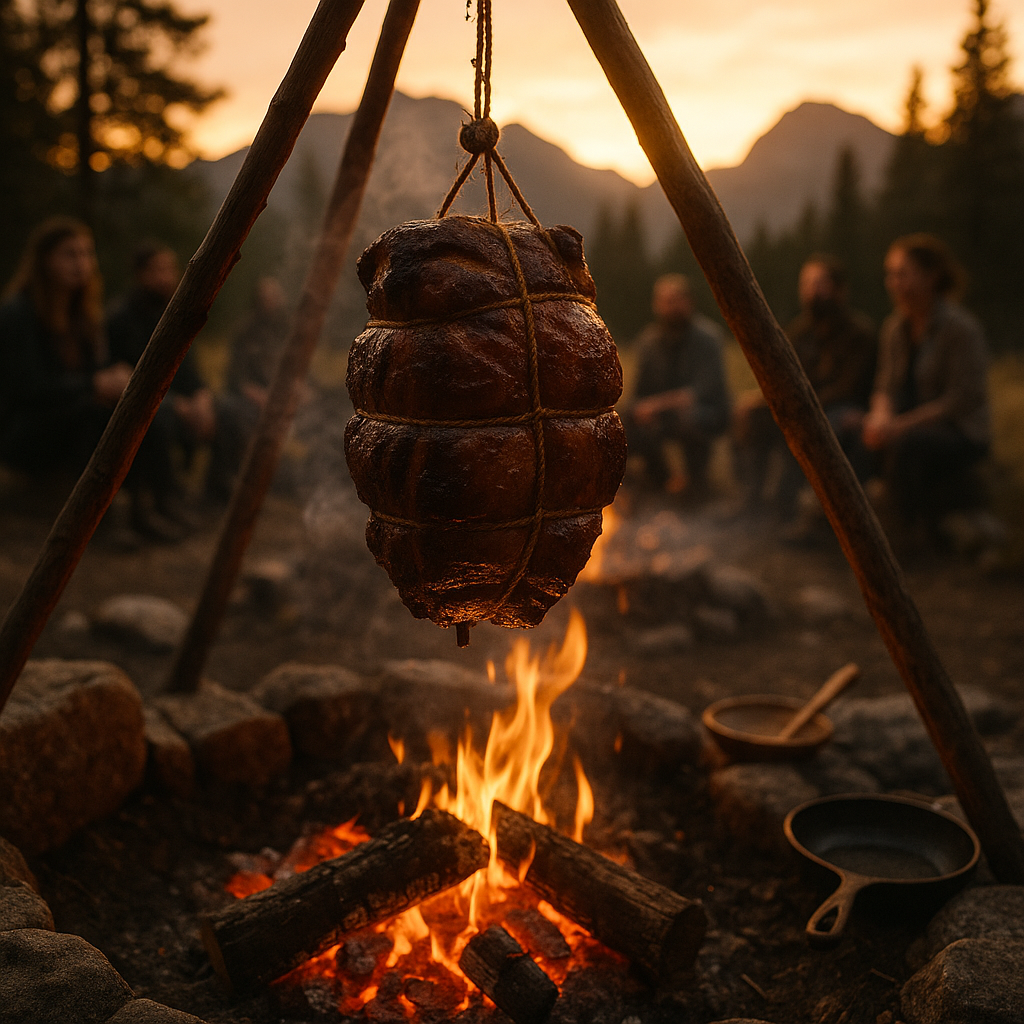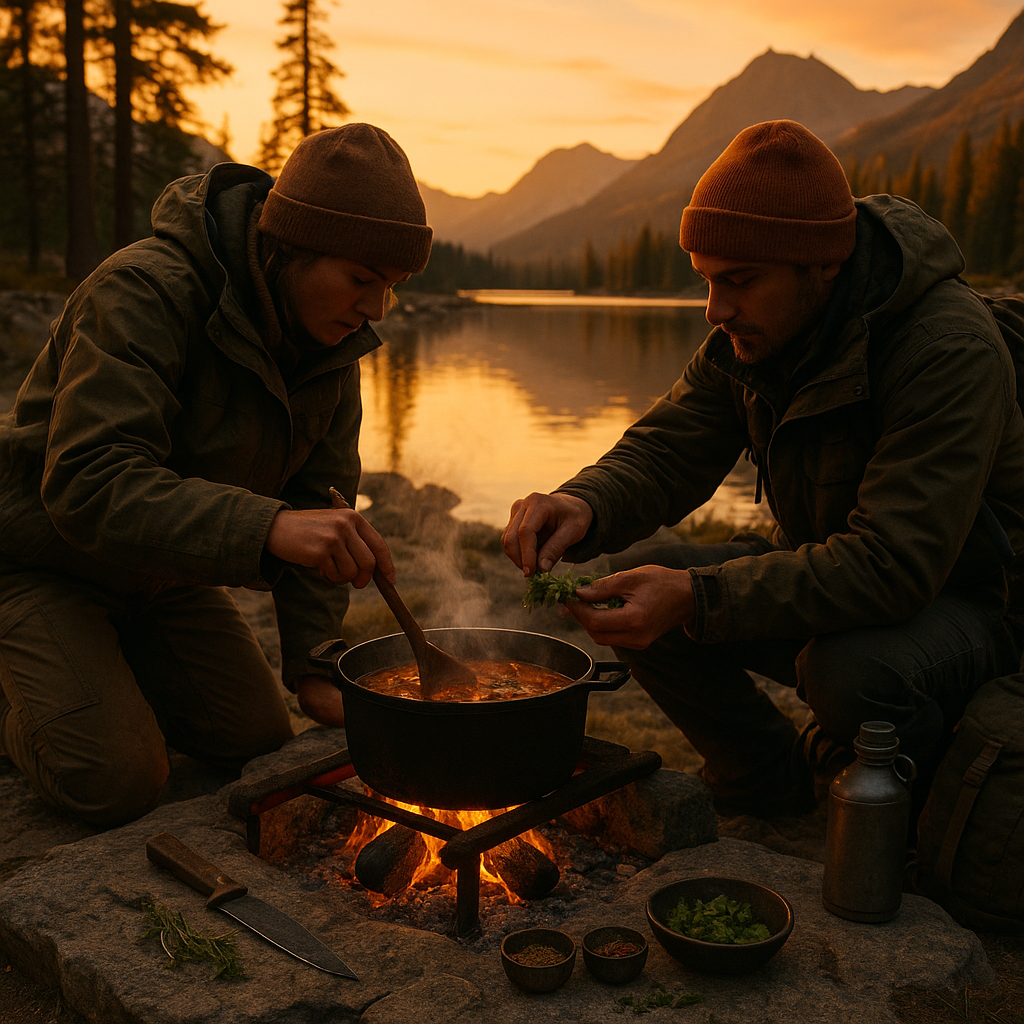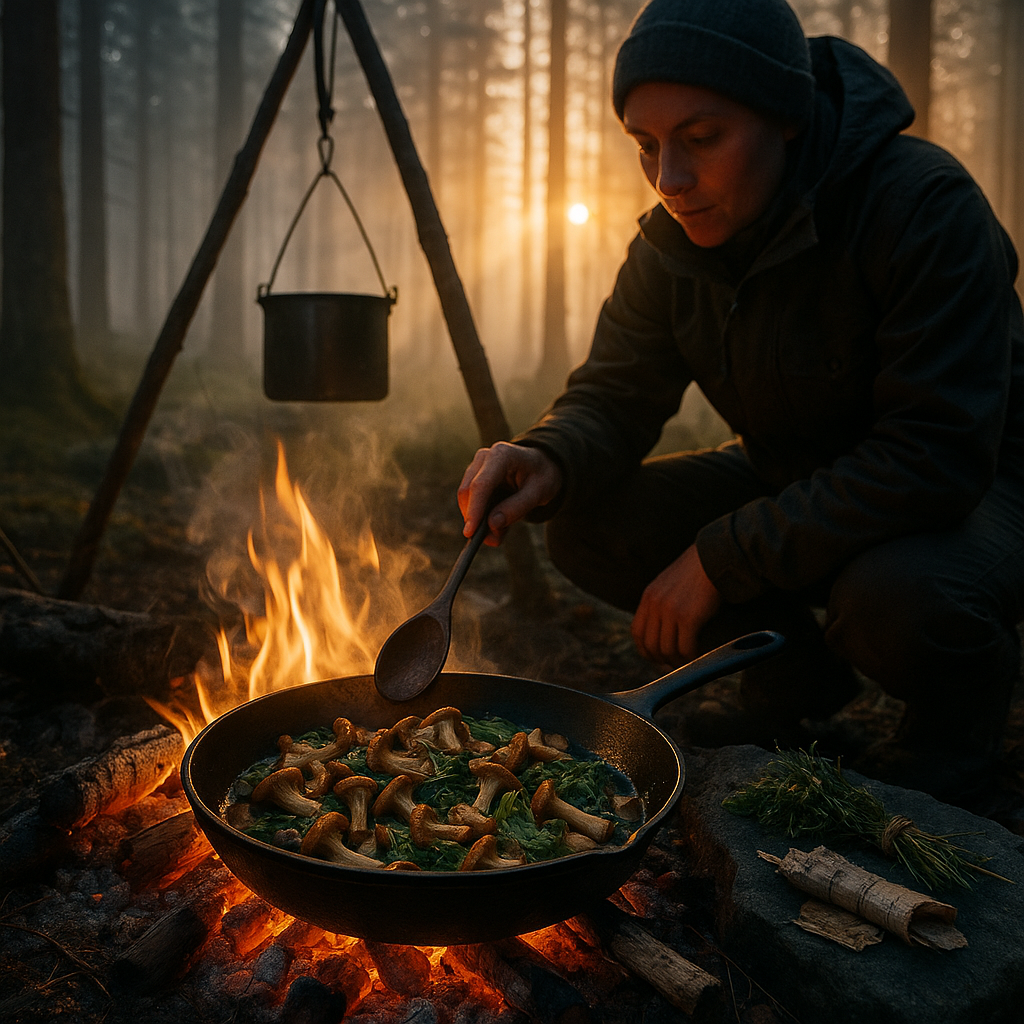Key Takeaways
- Harness the power of solar cooking: Solar ovens and reflectors capture the desert’s intense sunlight, cooking food efficiently and offering a modern take on ancient, sustainable culinary techniques. These methods conserve natural resources while expanding the possibilities for delicious outdoor meals.
- Stone heat retains and radiates energy naturally: Sun-heated desert stones serve as natural conductors, creating a resourceful, flame-free method for preparing meals. This approach embraces the abundant solar energy and enduring strength of the landscape.
- Earth ovens preserve tradition and practicality: Traditional earth pit cooking transforms sand and soil into slow-roasting chambers, blending heritage with the adaptability required to thrive in harsh desert conditions.
- Temperature control ensures food safety in extreme heat: Mastering food storage and preparation in high temperatures is critical for avoiding spoilage and contamination. Using temperature-resistant tools and time-honored preservation methods safeguards your culinary adventures.
- Flameless cooking promotes environmental sustainability: Relying on renewable energy and natural materials, these techniques shrink ecological footprints and align with conservation-minded travel, benefitting both people and planet.
- Reviving desert cultures through culinary heritage: Flameless cooking honors the expertise and resilience of desert-dwelling communities, creating meaningful connections to their sustainable ways of life and time-tested traditions.
The art of flameless cooking in desert landscapes is far more than a means of survival. It is an invitation to innovate, honor ecological boundaries, and rediscover the creative knowledge of those who thrived in these environments long before us. The following sections will guide you through mastering these resourceful techniques and reveal how to cook in harmony with the desert, turning challenges into enrichment.
Introduction
Fire-baked flavors are just one secret of the desert. Here, where open flames are sometimes dangerous or simply impractical, cooking becomes an act of ingenuity, rooted in the relentless embrace of sun, stone, and sand. In this unforgiving beauty, survival is not about making do but about unlocking culinary traditions honed across centuries. Meals simmer gently beneath cloudless skies, with heritage preserved using only the land’s own gifts.
Mastering flameless desert cooking reframes your understanding of both adventure and sustainability. Through solar-powered kitchen ingenuity, stone-heated meals, and earth oven traditions, these time-tested methods nurture flavor, respect fragile ecosystems, and connect us to the wisdom of past generations. Join this journey to discover how ancestral, innovative practices make eating in the wild not just feasible but unforgettable.
Ancient Wisdom Meets Modern Methods
Relentless sunlight and the hush of dunes set the stage for remarkable culinary creativity. For centuries, those inhabiting the desert have relied on the transformative power of sun and sand to cook nourishing meals. Their techniques are not only living testaments to resilience, but when paired with modern tools, offer new opportunities for explorers across the globe.
Stay Sharp. Stay Ahead.
Join our Telegram Channel for exclusive content, real insights,
engage with us and other members and get access to
insider updates, early news and top insights.
 Join the Channel
Join the Channel
The Solar Kitchen: Harnessing Desert Sunlight
Brilliant desert sun isn’t an obstacle; it’s an invaluable cooking partner. Traditional Bedouin communities and other desert dwellers have long leveraged reflective surfaces and dark cookware to turn sunlight into heat. Today’s solar kitchens enhance these time-honored approaches:
- Parabolic Solar Ovens: Mirror-lined devices reach temperatures comparable to home ovens, perfect for baking, roasting, and simmering, from traditional flatbreads to stews and tagines.
- Solar Box Cookers: Insulated boxes with reflective panels create gentle, even heat for a wide variety of dishes, while preserving nutrients and minimizing moisture loss.
- Mesa Top Cooking: Utilizing sun-warmed rock surfaces for heating and cooking, this method captures the day’s energy and infuses food with a subtle mineral essence.
From deserts in North Africa to American Southwest canyons, each location inspires innovations that fold new materials and thoughtful design into ancient wisdom, making solar cooking both portable and accessible for today’s adventurers.
Earth’s Natural Oven: Underground Cooking Techniques
Beneath the shimmering sands lies a storehouse of heat, waiting to be tapped for slow, flavorful cooking. The earth oven (sometimes known as sand pit cooking or “hangi” in certain cultures) uses layers of heated stones, soil, and organic insulation:
- Location Selection: Scouting sands and soils that retain heat well, optimizing energy use, and reducing cooking time.
- Pit Preparation: Digging a shallow pit, lining it with stones heated in the sun or over coals, then layering on desert plants for insulation.
- Temperature Control: Adjusting pit depth and cover materials to moderate the internal temperature for slow roasting.
- Food Wrapping: Protecting ingredients with leaves or cloth, ensuring a tender, infused result.
Desert cultures worldwide, from North American tribes to Berber communities in the Sahara, have perfected these methods, turning resource constraints into sources of flavor and celebration.
Stone and Sand: Heat Retention Cooking
Desert stones and sands are quiet champions of culinary practicality. With careful selection (choosing non-porous, fracture-resistant stones), the sun’s energy is stored and released gradually:
- Heating Stones: Place them in direct sunlight for hours, then arrange them in a shallow basin or reflective trench.
- Cooking Surfaces: Lay ingredients directly on hot stones, wrapping with natural fibers for even heat.
- Sand Roasting: Imbedding pots or food bundles in heated sand for gentle, all-around cooking.
These approaches, often blended together depending on landscape features and available materials, embody both efficiency and a poetic relationship with the land, echoing techniques found from Middle Eastern deserts to Australian Outback cooking traditions.
Desert-Adapted Food Safety
In sun-baked environments, culinary mastery includes understanding how to preserve food safely and minimize risks associated with heat exposure. Time-tested strategies include:
- Natural Dehydration: Harnessing dry air and steady sunlight to preserve fruits, meats, and grains without chemicals.
- Salt Preservation: Gathering and using naturally occurring desert salts to extend shelf life.
- Temperature Management: Timing meal prep for early mornings or evenings, utilizing shade and microclimates to minimize food spoilage.
- Storage Solutions: Employing traditional clay pots, buried caches, or shaded stone enclosures to keep ingredients cool and fresh.
Modern explorers can blend these strategies with portable coolers, vacuum storage, and moisture-resistant containers to extend safe food storage on even the longest journeys.
Cultural Heritage in Modern Practice
Flameless cooking stands at the intersection of culture, survival, and artistry. Around the world, desert communities hold generations of experiential knowledge, an inheritance of techniques, stories, and rituals shaped by the elements. Today’s outdoor cooks pay homage by:
- Consulting elders and tradition bearers, ensuring that ancient skills are passed to new hands.
- Adapting age-old tools (from clay pots to woven mats) for contemporary conditions.
- Sharing meals and tales in community, bridging past and present with every feast.
- Practicing stewardship, mindful not to disturb delicate habitats or waste precious resources.
These traditions highlight sustainability’s deep roots, inspiring respect for both culture and climate.
Environmental Impact and Sustainability
At its heart, flameless desert cooking honors the planet. By harnessing renewable energy and minimizing resource consumption, these techniques illuminate possibilities for eco-conscious living. Key benefits include:
- Zero dependence on firewood or fossil fuels, lowering carbon footprints and forest depletion.
- Efficient use of water, essential in water-scarce regions, by using slow-cooking and moisture-preserving methods.
- Renewable energy utilization through solar and geothermal heat, setting examples for broader sustainability initiatives in remote locations as well as urban centers.
- Respect for nature grounded in native wisdom, reinforcing that sustainable practices are as much about culture as they are about technology.
These insights inspire not only better cooking, but a more thoughtful approach to environmental stewardship in industries from hospitality and tourism to outdoor recreation.
Adaptive Techniques for Modern Adventurers
For explorers craving freedom and authenticity, today’s tools can blend seamlessly with traditional desert know-how. Innovations include:
- Lightweight Solar Equipment: Advances in reflective materials and foldable designs bring solar cookers into any backpack or campsite.
- Hybrid Cooking Systems: Combining solar, stone, and earth oven approaches increases flexibility across various conditions.
- Temperature Monitoring: Digital thermometers enhance food safety without sacrificing tradition.
- Versatile Provisions: Contemporary ingredients are easily adapted to ancient preservation techniques, think sun-dried fruit or salt-cured fish for nutrient-rich, transportable meals.
These adaptations make flameless cooking approachable for field scientists, eco-tourism guides, outdoor educators, and families seeking off-the





Leave a Reply